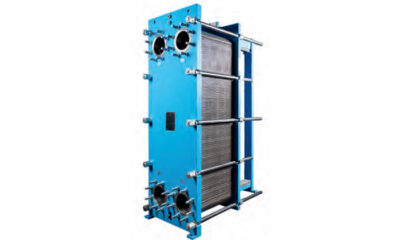Technology
Evolution of Refractory Shotcreting Technology
Published
7 years agoon
By
admin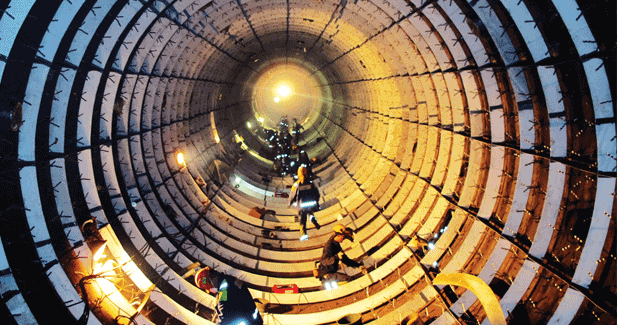
Shotcrete scores over installation by casting or gunning owing to faster installation rates, safest installation process, low rebound loss, better properties of the installed products as compared to gunning material, lower downtime of the process equipment, to name a few.
Shotcrete is the fastest growing technology for refractory installation. Compared to casting or gunning, the installation by shotcrete is 5 to 10 times faster and the quality of installed mass is similar to that obtained by casting. Due to the technological advantages of this installation technique, shotcrete virtually has seen exponential growth in the Indian market.
Shotcrete, like castable, is mixed with water in a controlled manner. The mixed material is pumped through a double piston pump and is conveyed through a combination of steel and rubber pipelines. At the nozzle, an admixture and air are added to allow the material to thicken and stick on the targeted surface. As expected, degree as well as rate of thickening depends on the quantum of added admixture. Shotcrete is a highly versatile installation technique and has proven to be successful virtually in all industrial applications. Material installed by shotcreting yields desired performance in virtually all sections of cement industry, blast furnaces, reheating furnaces, torpedo ladles, DRI kilns, and in numerous non-ferrous segments like alumina kilns, power, waste heat generators and incinerators.
Figure 1 illustrates the basics of shotcrete installation. Shotcrete material can be classified as a pumpable. Shotcrete material, like any castable, is mixed with requisite amount of water in an appropriate mixer to pumpable consistency. Subsequently the material is pumped to the installation location. Prior to its discharge from the nozzle, the material is mixed with an additive, which acts as thickener. Subsequently it is sprayed pneumatically on the installation surface. Owing to conveying of wet mass, shotcreting process is also known as wet gunning.
For cement industry, shotcrete has emerged as one of the most sought after technology due to its superior installation rates, lower rebound loss and better lining life, thereby benefitting the end user by means of lower downtime and extended refractory life. Figure 2 reports monolithic refractories installation rates by various installation techniques. Requisite features of refractories, except for those for burning and transition zones, are high resistance to abrasion and resistance to alkali attack. Refractories with alkali resistance suit extremely well to resist build up in the riser ducts as well as kiln inlet areas. Such products, in general, contain silicon carbide. As a fall out of presence of silicon carbide, alkali-resistant products for the cement industry also has high resistance to thermal shock, which make them suitable for kiln hood and throat wall. Calderys India has been successful in developing shotcrete formulations with features required for the cement industry. ACCSHOT B and ACCSHOT AFM/CRC are abrasion and alkali resistant shotcrete products, respectively from Calderys India.
Development of shotcrete material for Indian condition
The major challenge for the development of shotcrete formulations has been to make it compatible with Indian weather condition. It is well known that the material for shotcreting, unlike gunning formulations and like castable, is premixed with specified amount of water for pumpable consistency. Owing to this mixing process, the variability as well as dependence of installed mass quality on the skill of installer (gunman), observed for gunning material, is virtually eliminated. The obvious requirement for shotcrete, hence, is the mix should remain pumpable for reasonable duration so that the material does not get choked in the conveying conduit during pumping process.
Choking is the biggest hindrance for installation of material by shotcreting. This not only causes installation interruption leading to loss of time but also is one of the major causes of material wastage. Like any castable, the working time of shotcrete reduces with the increase of ambient/mix temperature. Especially during Indian summer, when the ambient temperature exceeding 45 degree Celsius is a common occurrence, maintaining the pumpability of the mix for long enough duration, so that the material does not set in the conduit during pumping, has been the major challenge during the development of shotcrete material.

>
Apart from maintenance of adequate working time, even at ambient temperature of 45 degree Celsius or so, the other challenges, during shotcrete product development, had been:
Elimination of segregation of fines during pumping (Figure 3), which illustrates that improperly-graded material causes segregation of fines during pumping.
Limiting the thickening additive requirement at the nozzle to its minimal level, as well as
Minimal variation in thickening additive requirement even with the change in ambient temperature
Calderys India has successfully overcome these challenges through in?house R&D activity.
Comparative properties of shotcrete and other mechanically-installed monolithic refractories are illustrated in Figures 4 and 5. It is evident from the data that characteristics of shotcrete materials, developed by Calderys India, are virtually comparable to those of Low Cement Castables (LCC) in all respect, including their CaO content. The latter implies that the refractory properties of installed Shotcreted material would be similar to that of LCC. In short, shotcrete yields features and properties of LCC at significantly higher installation rate.
Calderys India’s success with shotcreting technology can primarily be attributed to development of product compatible for Indian ambient condition as well as the skilled human resource for installation. The acceptability of Calderys India’s shotcrete material, virtually in all industrial segments, emphasises our success with shotcrete technology. In this paper, we give a brief coverage of the shotcreting job carried out, in various areas of cement industry, by Calderys India.
Calderys’s experience with Shotcrete
In India, Calderys has emerged as a key solution provider for all industry segments including cement. Table I, based on our experience, reports the comparison amongst various application methods of monolithics. Table II reports some major shotcrete installation jobs by Calderys India. In the following section some of them have been covered in greater detail.

>
Case I
Refractory lining of a new preheater at a prestigious cement plant in Maharashtra: This job involved refractory lining of a newly-installed preheater?calciner connecting duct. The estimated time requirement for the completion of refractory lining by 75 MT of castable has been 22 days, which included eight days for mechanical work. As per the project schedule, however, only 15 days had been allocated to this job. Since the reduction of time requirement for the mechanical job was not possible, the customer was in the lookout for a solution through refractory. In short, we had approximately seven days for the completion of the refractory job, which included erection of scaffolding, welding of 4,500 anchors, fixing of 250 m2 Calcium Silicate blocks, refractory and finally removal of the scaffolding. It was estimated that if the refractory installation was done by using castable, it would require 15 days and hence, installation by Shotcreting was proposed, to which the customer agreed. We had been successful in installing 75 MT of Shotcreting materials in the duct, which included constrained environment like of less die in 15 hours. The total refractory installation job could, thus, be completed within seven days, as desired by the customer, in effect there has been a saving of seven days.
Case II
Refractory solution for kiln hood, throat wall and cooler take off duct at a prestigious cement plant in Madhya Pradesh: The primary issue at this unit had been poor refractory life in kiln hood, throat wall and cooler take off duct (ToD). Refractories in these locations did not last even for a year. The customer approached Calderys India for extension of refractory life in the aforementioned segments, simultaneously allocated less time for completion, i.e., only three days.. It was communicated to customer that castable lining would require approximately seven days, whereas the same, if carried out by Shotcreting, would require three days leading to reduction of kiln downtime by approximately four days. Installation by shotcreting was agreed upon.
While analysing the refractory condition of the kiln hood, throat wall and ToD, it was realised that inadequate abrasion resistance of the refractory used is the root cause its poor performance. It, hence, was recommended that we use our ACCSHOT B for this job and the customer agreed with the proposal.
The job involved anchor welding as well as calcium silicate blocks fixing, which required two days. Subsequently 70 MT of ACCSHOT B was installed in nine hours. The revamping job could, thus, be completed in less than three days. The same job, if installation was carried out by using castable, would have required seven days, thus, leading to saving of more than four days. Figure 6 illustrates the condition of throat wall before and after the completion of the job.
Inspection was carried out in January 2018, i.e., after 13 months of operation and the refractory condition was found to be excellent. The kiln is still in operation and thus, shotcreted material met customer’s requirement of improved refractory performance. Subsequent to successful performance of ACCSHOT B in the high abrasion areas, this cement plant has placed a repeat order for ACCSHOT B, which will be completed within September 2018.
Case III
Breakdown converted to annual shutdown at prestigious cement plant in Chhattisgarh: Due to breakdown in raw meal section the plant operation had to be stopped in the first week of September 2017. Since the annual shutdown was planned in the end of the same month, the unit was not ready with all the refractories at the plant site. The major refractory repair, during the annual shutdown, was planned for throat wall cooler bull nose and kiln hood side wall. Based on the performance of shotcreted material at their unit, customer opted for shotcrete material.
Calderys India could organise shotcrete material, shotcrete machine and the installer in short notice. Material recommended for all the affected sections was ACCSHOT B. Total installed quantity was ~ 70 MT. All the materials could be installed in 18 hrs, compared to over 7 days, if the work had been carried out with castable. Figures 7 and 8 illustrate the condition of the refractory linings of cooler bull nose and kiln hood wall before and after the repair carried out by shotcrete materials.
Case IV
Throat wall and cooler first grate was repaired by ACCSHOT B at a prestigious cement plant unit in Andhra Pradesh: Apart from installation of refractory, the job involved stainless steel anchor welding, ceramic anchor fixing, placement of calcium silicate blocks and shotcrete installation. Sixty MT of shotcrete material was installed in 12 hours as compared to four days if the same had been done with castable.
Conclusion
Refractory installation by shotcreting has gained popularity among the Indian refractory users due to its incomparable benefits – faster rate of installation, lesser possibility of human error due to reduced manpower involvement, lower rebound loss, excellent service from the installed lining, etc. Calderys India has gained enough experience in shotcrete Installation, through in?house developed products, virtually in all industry segments including cement. Calderys’ R&D team has ensured that the product formulations are robust enough to withstand Indian summer heat during installation.
About the authors
IN Chakraborty, S Sinha, RK Laharia, A Bose and S Upadhyay of Calderys India Refractories Limited, Nagpur.
You may like
Concrete
Technology plays a critical role in achieving our goals
Published
2 weeks agoon
December 24, 2025By
admin
Arasu Shanmugam, Director and CEO-India, IFGL, discusses the diversification of the refractory sector into the cement industry with sustainable and innovative solutions, including green refractories and advanced technologies like shotcrete.
Tell us about your company, it being India’s first refractory all Indian MNC.
IFGL Refractories has traditionally focused on the steel industry. However, as part of our diversification strategy, we decided to expand into the cement sector a year ago, offering a comprehensive range of solutions. These solutions cover the entire process, from the preheater stage to the cooler. On the product side, we provide a full range, including alumina bricks, monolithics, castables, and basic refractories.
In a remarkably short span of time, we have built the capability to offer complete solutions to the cement industry using our own products. Although the cement segment is new for IFGL, the team handling this business vertical has 30 years of experience in the cement industry. This expertise has been instrumental in establishing a brand-new greenfield project for alumina bricks, which is now operational. Since production began in May, we are fully booked for the next six months, with orders extending until May 2025. This demonstrates the credibility we have quickly established, driven by our team’s experience and the company’s agility, which has been a core strength for us in the steel industry and will now benefit our cement initiatives.
As a 100 per cent Indian-owned multinational company, IFGL stands out in the refractory sector, where most leading players providing cement solutions are foreign-owned. We are listed on the stock exchange and have a global footprint, including plants in the United Kingdom, where we are the largest refractory producer, thanks to our operations with Sheffield Refractories and Monocon. Additionally, we have a plant in the United States that produces state-of-the-art black refractories for critical steel applications, a plant in Germany providing filtering solutions for the foundry sector, and a base in China, ensuring secure access to high-quality raw materials.
China, as a major source of pure raw materials for refractories, is critical to the global supply chain. We have strategically developed our own base there, ensuring both raw material security and technological advancements. For instance, Sheffield Refractories is a leader in cutting-edge shotcreting technology, which is particularly relevant to the cement industry. Since downtime in cement plants incurs costs far greater than refractory expenses, this technology, which enables rapid repairs and quicker return to production, is a game-changer. Leading cement manufacturers in the country have already expressed significant interest in this service, which we plan to launch in March 2025.
With this strong foundation, we are entering the cement industry with confidence and a commitment to delivering innovative and efficient solutions.
Could you share any differences you’ve observed in business operations between regions like Europe, India, and China? How do their functionalities and approaches vary?
When it comes to business functionality, Europe is unfortunately a shrinking market. There is a noticeable lack of enthusiasm, and companies there often face challenges in forming partnerships with vendors. In contrast, India presents an evolving scenario where close partnerships with vendors have become a key trend. About 15 years ago, refractory suppliers were viewed merely as vendors supplying commodities. Today, however, they are integral to the customer’s value creation chain.
We now have a deep understanding of our customers’ process variations and advancements. This integration allows us to align our refractory solutions with their evolving processes, strengthening our role as a value chain partner. This collaborative approach is a major differentiator, and I don’t see it happening anywhere else on the same scale. Additionally, India is the only region globally experiencing significant growth. As a result, international players are increasingly looking at India as a potential market for expansion. Given this, we take pride in being an Indian company for over four decades and aim to contribute to making Aatma Nirbhar Bharat (self-reliant India) a reality.
Moving on to the net-zero mission, it’s crucial to discuss our contributions to sustainability in the cement industry. Traditionally, we focused on providing burnt bricks, which require significant fuel consumption during firing and result in higher greenhouse gas emissions, particularly CO2. With the introduction of Sheffield Refractories’ green technology, we are now promoting the use of green refractories in cement production. Increasing the share of green refractories naturally reduces CO2 emissions per ton of clinker produced.
Our honourable Prime Minister has set the goal of achieving net-zero emissions by 2070. We are committed to being key enablers of this vision by expanding the use of green refractories and providing sustainable solutions to the cement industry, reducing reliance on burnt refractories.
Technology is advancing rapidly. What role does it play in helping you achieve your targets and support the cement industry?
Technology plays a critical role in achieving our goals and supporting the cement industry. As I mentioned earlier, the reduction in specific refractory consumption is driven by two key factors: refining customer processes and enhancing refractory quality. By working closely as partners with our customers, we gain a deeper understanding of their evolving needs, enabling us to continuously innovate. For example, in November 2022, we established a state-of-the-art research centre in India for IFGL, something we didn’t have before.
The primary objective of this centre is to leverage in-house technology to enhance the utilisation of recycled materials in manufacturing our products. By increasing the proportion of recycled materials, we reduce the depletion of natural resources and greenhouse gas emissions. In essence, our focus is on developing sustainable, green refractories while promoting circularity in our business processes. This multi-faceted approach ensures we contribute to environmental sustainability while meeting the industry’s demands.
Of course, this all sounds promising, but there must be challenges you’re facing along the way. Could you elaborate on those?
One challenge we face is related to India’s mineral resources. For instance, there are oxide deposits in the Saurashtra region of Gujarat, but unfortunately, they contain a higher percentage of impurities. On the magnesite side, India has deposits in three regions: Salem in Tamil Nadu, Almora in Uttarakhand, and Jammu. However, these magnesite deposits also have impurities. We believe the government should take up research and development initiatives to beneficiate these minerals, which are abundantly available in India, and make them suitable for producing high-end refractories. This task is beyond the capacity of an individual refractories company and requires focused policy intervention. While the government is undertaking several initiatives, beneficiation of minerals like Indian magnesite and Indian oxide needs to become a key area of focus.
Another crucial policy support we require is recognising the importance of refractories in industrial production. The reality is that without refractories, not even a single kilogram of steel or cement can be produced. Despite this, refractories are not included in the list of core industries. We urge the government to designate refractories as a core industry, which would ensure dedicated focus, including R&D allocations for initiatives like raw material beneficiation. At IFGL, we are taking proactive steps to address some of these challenges. For instance, we own Sheffield Refractories, a global leader in shotcrete technology. We are bringing this technology to India, with implementation planned from March onwards. Additionally, our partnership with Marvel Refractories in China enables us to leverage their expertise in providing high-quality refractories for steel and cement industries worldwide.
While we are making significant efforts at our level, policy support from the government—such as recognising refractories as a core industry and fostering research for local raw material beneficiation—would accelerate progress. This combined effort would greatly enhance India’s capability to produce high-end refractories and meet the growing demands of critical industries.
Could you share your opinion on the journey toward achieving net-zero emissions? How do you envision this journey unfolding?
The journey toward net zero is progressing steadily. For instance, even at this conference, we can observe the commitment as a country toward this goal. Achieving net zero involves having a clear starting point, a defined objective, and a pace to progress. I believe we are already moving at an impressive speed toward realising this goal. One example is the significant reduction in energy consumption per ton of clinker, which has halved over the past 7–8 years—a remarkable achievement.
Another critical aspect is the emphasis on circularity in the cement industry. The use of gypsum, which is a byproduct of the fertiliser and chemical industries, as well as fly ash generated by the power industry, has been effectively incorporated into cement production. Additionally, a recent advancement involves the use of calcined clay as an active component in cement. I am particularly encouraged by discussions around incorporating 12 per cent to 15 per cent limestone into the mix without the need for burning, which does not compromise the quality of the final product. These strategies demonstrate the cement industry’s constructive and innovative approach toward achieving net-zero emissions. The pace at which these advancements are being adopted is highly encouraging, and I believe we are on a fast track to reaching this critical milestone.
– Kanika Mathur
Technology
ARAPL Reports 175% EBITDA Growth, Expands Global Robotics Footprint
Affordable Robotic & Automation posts strong Q2 and H1 FY26 results driven by innovation and overseas orders
Published
3 months agoon
October 15, 2025By
admin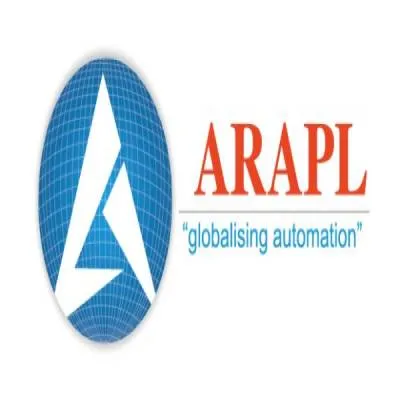
Affordable Robotic & Automation Limited (ARAPL), India’s first listed robotics firm and a pioneer in industrial automation and smart robotic solutions, has reported robust financial results for the second quarter and half year ended September 30, 2025.
The company achieved a 175 per cent year-on-year rise in standalone EBITDA and strong revenue growth across its automation and robotics segments. The Board of Directors approved the unaudited financial results on October 10, 2025.
Key Highlights – Q2 FY2026
• Strong momentum across core automation and robotics divisions
• Secured the first order for the Atlas AC2000, an autonomous truck loading and unloading forklift, from a leading US logistics player
• Rebranded its RaaS product line as Humro (Human + Robot), symbolising collaborative automation between people and machines
• Expanded its Humro range in global warehouse automation markets
• Continued investment in deep-tech innovations, including AI-based route optimisation, autonomy kits, vehicle controllers, and digital twins
Global Milestone: First Atlas AC2000 Order in the US
ARAPL’s US-based subsidiary, ARAPL RaaS (Humro), received its first order for the next-generation Atlas AC2000 autonomous forklift from a leading logistics company. Following successful prototype trials, the client placed an order for two robots valued at Rs 36 million under a three-year lease. The project opens opportunities for scaling up to 15–16 robots per site across 15 US warehouses within two years.
The product addresses an untapped market of 10 million loading docks across 21,000 warehouses in the US, positioning ARAPL for exponential growth.
Financial Performance – Q2 FY2026 (Standalone)
Net Revenue: Rs 25.7587 million, up 37 per cent quarter-on-quarter
EBITDA: Rs 5.9632 million, up 396 per cent QoQ
Profit Before Tax: Rs 4.3808 million, compared to a Rs 360.46 lakh loss in Q1
Profit After Tax: Rs 4.1854 lakh, representing 216 per cent QoQ growth
On a half-year basis, ARAPL reported a 175 per cent rise in EBITDA and returned to profitability with Rs 58.08 lakh PAT, highlighting strong operational efficiency and improved contribution from core businesses.
Consolidated Performance – Q2 FY2026
Net Revenue: Rs 29.566 million, up 57% QoQ
EBITDA: Rs 6.2608 million, up 418 per cent QoQ
Profit After Tax: Rs 4.5672 million, marking a 224 per cent QoQ improvement
Milind Padole, Managing Director, ARAPL said, “Our Q2 results reflect the success of our innovation-led growth strategy and the growing global confidence in ARAPL’s technology. The Atlas AC2000 order marks a defining milestone that validates our engineering strength and accelerates our global expansion. With a healthy order book and continued investment in AI and autonomous systems, ARAPL is positioned to lead the next phase of intelligent industrial transformation.”
Founded in 2005 and headquartered in Pune, Affordable Robotic & Automation Ltd (ARAPL) delivers turnkey robotic and automation solutions across automotive, general manufacturing, and government sectors. Its offerings include robotic welding, automated inspection, assembly automation, automated parking systems, and autonomous driverless forklifts.
ARAPL operates five advanced plants in Pune spanning 350,000 sq ft, supported by over 400 engineers in India and seven team members in the US. The company also maintains facilities in North Carolina and California, and service centres in Faridabad, Mumbai, and San Francisco.
Technology
M.E. Energy Bags Rs 490 Mn Order for Waste Heat Recovery Project
Second major EPC contract from Ferro Alloys sector strengthens company’s growth
Published
3 months agoon
October 15, 2025By
admin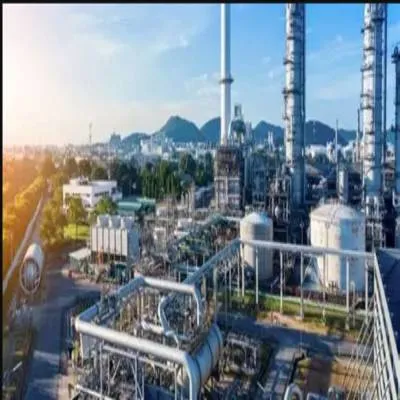
M.E. Energy Pvt Ltd, a wholly owned subsidiary of Kilburn Engineering Ltd and a leading Indian engineering company specialising in energy recovery and cost reduction, has secured its second consecutive major order worth Rs 490 million in the Ferro Alloys sector. The order covers the Engineering, Procurement and Construction (EPC) of a 12 MW Waste Heat Recovery Based Power Plant (WHRPP).
This repeat order underscores the Ferro Alloys industry’s confidence in M.E. Energy’s expertise in delivering efficient and sustainable energy solutions for high-temperature process industries. The project aims to enhance energy efficiency and reduce carbon emissions by converting waste heat into clean power.
“Securing another project in the Ferro Alloys segment reinforces our strong technical credibility. It’s a proud moment as we continue helping our clients achieve sustainability and cost efficiency through innovative waste heat recovery systems,” said K. Vijaysanker Kartha, Managing Director, M.E. Energy Pvt Ltd.
“M.E. Energy’s expansion into sectors such as cement and ferro alloys is yielding solid results. We remain confident of sustained success as we deepen our presence in steel and carbon black industries. These achievements reaffirm our focus on innovation, technology, and energy efficiency,” added Amritanshu Khaitan, Director, Kilburn Engineering Ltd
With this latest order, M.E. Energy has already surpassed its total external order bookings from the previous financial year, recording Rs 138 crore so far in FY26. The company anticipates further growth in the second half, supported by a robust project pipeline and the rising adoption of waste heat recovery technologies across industries.
The development marks continued momentum towards FY27, strengthening M.E. Energy’s position as a leading player in industrial energy optimisation.

ICRA Sees Steady Cement Demand Growth Ahead

India Imposes Three-Year Tariff on Select Steel Imports

GCCA India–NCB Carbon Uptake Report Released at NCB Foundation Day

Global Crude Steel Output Falls 4.6% to 140.1 Mt in Nov 2025

Shree Cement To Invest Rs 20 Billion In Maharashtra Plant

ICRA Sees Steady Cement Demand Growth Ahead

India Imposes Three-Year Tariff on Select Steel Imports

GCCA India–NCB Carbon Uptake Report Released at NCB Foundation Day

Global Crude Steel Output Falls 4.6% to 140.1 Mt in Nov 2025

Shree Cement To Invest Rs 20 Billion In Maharashtra Plant
Trending News
-
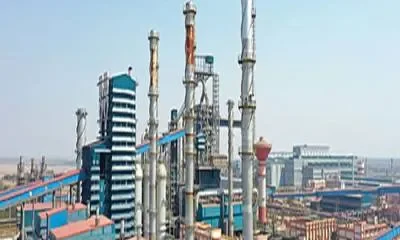
 Uncategorized3 weeks ago
Uncategorized3 weeks agoNMDC Steel Posts Record Output And Efficiency Gains In November
-
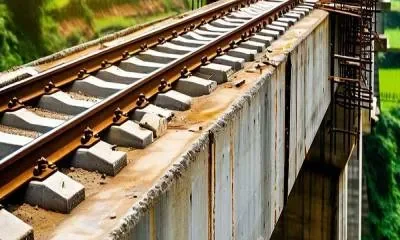
 Concrete4 weeks ago
Concrete4 weeks agoNiraj Cement JV Wins Railway and Metro Contracts
-
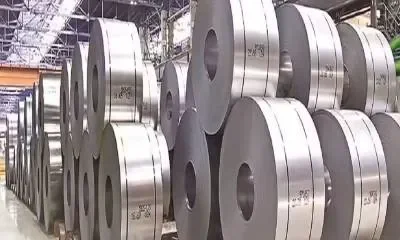
 Uncategorized3 weeks ago
Uncategorized3 weeks agoLloyds Metals, Tata Steel Sign MoU For Strategic Partnership
-
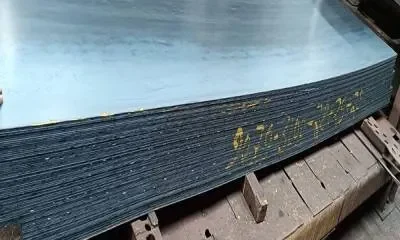
 Uncategorized3 weeks ago
Uncategorized3 weeks agoEnlight Metals Enters Chemical Trading With New Subsidiary











